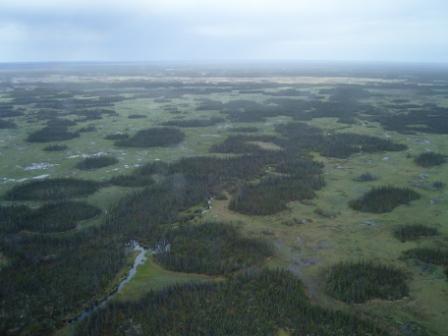|
|
|
|
|
|
Field Investigation and
Hydrological Modeling of Sub-Arctic Wetland Hydrology
in
|
Our Partners:
|
Wetland occupies 14% of the Canadian landscape and yields non-negligible
influence on hydrological sources distribution, water quality and quantity,
climate change as well as wildlife habitats. Hence, to understand and
characterize the hydrological systems of wetlands is inevitable and crucial for
the purpose of modeling the water cycle and predicting how the water cycle may
vary in the next century. The
hydrology of a wetland system is spatially and temporally complex as a result
of the transition between connected and disconnected fresh water ponds within
shallow topographical depressions and surrounding terrestrial landscapes. Such
complexities make the study of wetland hydrology a challenging task. This is
particularly so in sub-arctic wetlands because of special environmental
conditions, such as long cold winters, extensive permafrost and peatlands, and broad boreal forest and tundra coverage.
Recently, public recognition of their environmental significance has
highlighted the need for a better understanding of hydrological processes in
order to better conserve wetlands and predict responses to climate related
impacts in northern regions. As a result of this importance, in-depth studies
on the hydrologic cycle in sub-arctic wetlands and their sensitivity to climate
change have become not only an urgent task for hydrologists and engineers but
also an essential part of wetland and global change research. Therefore, to
address the above issues, this research focuses on extensive field surveys and
advanced hydrological modeling to quantify the components of energy and
moisture cycling and explore interactions between water/carbon transport and
climatic/geographic conditions in sub-arctic wetland systems. A representative
sub-arctic wetland system, the |
@NRPOP Lab, 2007
Faculty of Engineering and Applied Science,
Memorial University, St. John's, NL, Canada A1B 3X5
Contact us at nrpop@engr.mun.ca








